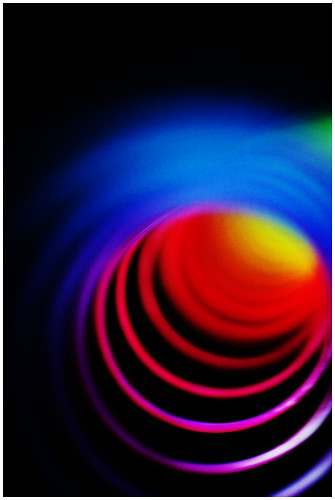She leans forward in the sensible chair. Her voice is soft but earnest, and her gaze intent, as the questions cascade from her mouth. What can I tell her? What do I know? I do at least know that I don’t know, and perhaps I know something of another way of not knowing. ‘Curious minds like ours stay open to the new questions that emerge from our original ones,’ I venture. This probably isn’t helping. ‘I don’t mean that you shouldn’t ask those things. I just mean that it’s OK to find that they lead you to more and “better” questions instead of to fixed answers. What was there before there was time? I don’t know. But it’s good to ponder, because it leads to physical questions about the origins of time and the universe. Human brains process that universe in a way that gives rise to a sense of duration. It’s in here, not “out there”.’
‘You should talk to my son,’ she says. ‘I think you’d get along. He had cancer, but he’s recovering now. He gets down sometimes. I do too – or I used to. It’s better here. Sometimes I just sit awake in my bed for hours, thinking. They keep asking if I’m OK, but I’m fine. I’m just going through all this... stuff, in my head. Your book – I keep starting it, but then I get stuck with more...’
The musak has come back on, so I have to lean forward in my chair so that she can hear me. The easy-clean pad squeaks under me. One of my legs is going numb.
‘I used to stare at the sun,’ she says. Her eyes are quite... bloodshot. ‘I’d look at it for ages, and think I could see things there – like a sort of halo. I probably damaged my eyes – I can’t see a ball coming at me if someone throws one in my direction – but nobody told me I shouldn’t look at it.’
I agree that it probably did damage her eyes. She is remarkable.
‘This thing with your brain... your head. I’m not against it; I think it’s fascinating. But how do you...? How does it work?’ she asks.
‘Well, the brain is a physical thing. It’s made of atoms, like everything else. So I’m very curious to know whether it can be “put on hold” in some way. They idea of cryonics is to do that using ultra-cold temperatures to stop all chemical reactions – to stop all decay. It’s an experiment. It’s about potentialities – I’m trying to leave open the small possibility that some future technology might fix me and revive me,’ I explain.
‘The brain is amazing. I sometimes wonder if we have any idea how to use it properly,’ she says, smiling. Her hand smooths down the cover of the newly signed book.
‘I met Doris Stokes, you know. She came into the shop where I was working when I was young. You won’t believe any of this, but she told me a lot of things about my life that have turned out to be true.’
‘If you mean I don’t believe she could predict your future, you’re right,’ I say. ‘But I do find it fascinating that some people have that skill, that level of... empathy, where they can tune into other people and make guesses so good that they sound like they must be psychic.’
The Catholic priest two sensible chairs across the lounge from us raises his voice as he switches into formal prayer mode. Is this a competition? He is kneeling in front of one of the other residents, eyes tight shut, holding her hands.
Ruby is oblivious. We continue our catechism.
‘But Swein Macdonald said similar things. I met him too, much later, when I was married. He said there was something special about me. He said I’d be happy. And I am, now.’
‘I’ll bet he could see that you were curious, looking for something. A lot of people mistake that for some kind of “spirituality”,’ I say.
‘Oh, I go to the church service every week,’ she says.
‘Good entertainment?’ I ask.
‘Well... a lot of it just makes me angry.’
It makes me angry, too. These people are like vultures. Stupid fat head on white collar with his intrusive, empty words and contact. Leave. Her. Alone. ‘Me too,’ I say. ‘Any notion of “God” is sort of “out of bounds” – there are no useful questions we can ask about a being who is supposed to exist “outside” of everything we can ask questions about, if you see what I mean. It’s a blind alley.’
‘When I was living up north – when I was married – my husband started to drink a lot. He beat me sometimes,’ she says.
With those red-ringed whites, I can’t tell whether she’s about to cry or not. ‘I’m so sorry to hear that, Ruby. I...’
‘I could take it, most of the time,’ she says. ‘I didn’t stop thinking. I suppose I was in a world of my own. Then, later, I was taking a lot of co-codamol, and that didn’t help.’ This without a hint of bitterness.
‘I hope you keep pondering things... keep thinking. I know it’s difficult for people. They think we’re being weird or awkward. But it’s how we are... how we make sense of things... not that there’s any ultimate sense to be made, of course.’
The musak is now a 60s/70s pop compilation. Telstar, I think, I used to have that somewhere. Odd tracks. Not like stuff they usually play in here.
‘Well,’ Ruby says, looking over her shoulder to where my wife is sitting with my mother-in-law, ‘I’m keeping you from the person you actually came to visit.’
‘Not at all,’ I assure her. ‘I’ve really enjoyed our chat.’ I stretch my numb legs and stand up.
‘So have I,’ Ruby says, rising slowly to her feet. ‘Thank you.’
Oh how she deserves another chance. Another crack at this thing. Why did nobody take the time to listen to her properly, to... nurture her?
She beams and blinks her two wide coronas at me before joining the shuffling, zimmering throng leaving this mortal lounge for the dining room, and the next scheduled meal break.






